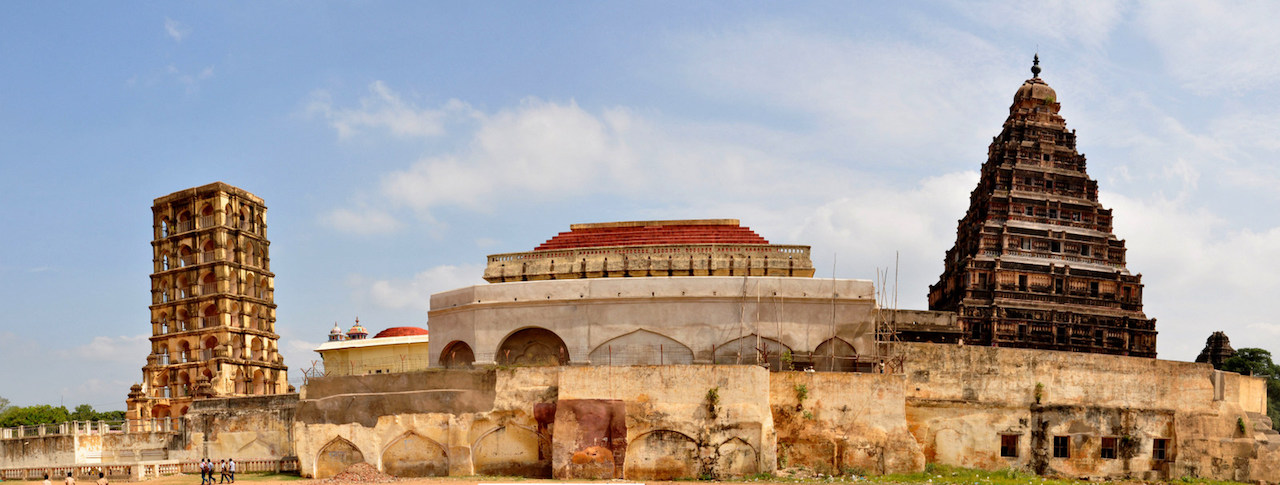The next popular attraction of Thanjavur we visited was the Thanjavur Royal Palace. We were in time when the palace issued tickets for the afternoon session at 1.30 p.m. Once you enter the palace there are two more tickets to be bought for different sections.
Thanjavur Maratha Palace
The bit of research I had done on this monument revealed that the Thanjavur Royal Palace was originally constructed by the Nayaks and then by the Maratha dynasty.
We first turned towards theMaratha Durbar Hall where the Maratha rulers held court/ durbar. A huge Thanjavur doll which is a pride artefact of Thanjavur is present at the entrance. The hall is full of colourful murals and has portraits of the rulers behind the dais.
Thanjavur Royal Palace
To the right of the durbar hall is a museum with a scattering of relics like swords, daggers, chests, bells and also the ancient kitchen inhabitants like different types of pestels, pounders and grinders all mostly made of stone.
We were taken on a virtual tour of Thanjavur and nearby attractions in an air conditioned theatre and we learnt about many of the wonders and rich ancestral heritage of Tamil Nadu.
Thanjavur Maratha Palace
We visited the Nayak Courtyard leading to the Arsenal Tower. A gramaudyog shop was present selling the local artefacts. I picked up a Thanjavur doll for my daughter preferring to buy at this government run shop at a fixed price than bargain with the vendors selling them on their carts. Many of the dolls kept for golu in our houses are available and since the artists are from Thanjavur, the cost is definitely lower than what we get at our metros.
We were unfortunate because we could not visit the Saraswathi Mahal Library Museum and the Arsenal Tower. This tower has a vantage point of the Vijayanagar Fort Complex as well as the Gopuram and Vimana of the Brihadeshwar Temple. The Tower was used as a watch tower by the kings.
Thanjavur Maratha Palace
Now we had to listen to our grumbling tummies and think about having lunch. After a fulfilling meal, we proceeded back to Swamimalai. About nine kilometres from Swamimalai, we stopped at Papanasam Village and visited the Papanasam Temple enshrining the idol of Papavinaseswarar. Constructed during the Pandya period, the temple has 108 lingams.
Returning to our resort we spent a pleasant evening. Bharatnatyam performances were held as part of the evening entertainment which we all enjoyed.
The next morning we set off on our journey back to Chennai. We visited Uppiliappan Temple which is around 15 kilometres from Swamimalai. Home to Lord Vishnu, belief has it that the Lord arrived at Uppiliappan before the Lord of the Seven Hills at Tirupathi. So He is regarded as the elder brother. The deity of Vishnu resembles that of Lord Venkateshwara in Tirupathi.
Following the same Trichy-Chennai Highway Route we were back in Chennai by 4 p.m.


No Comment